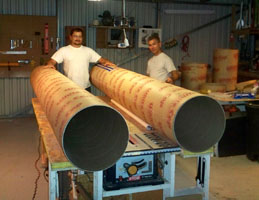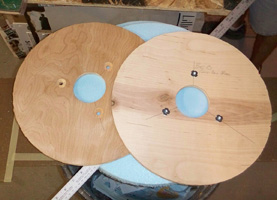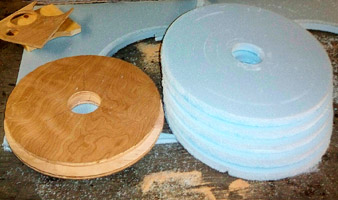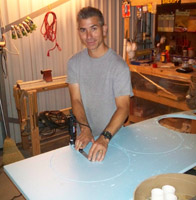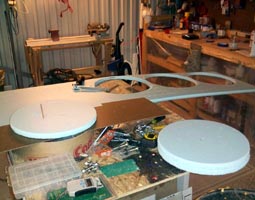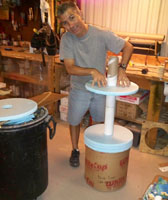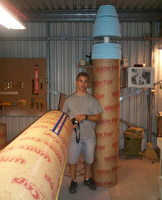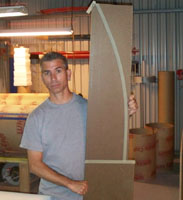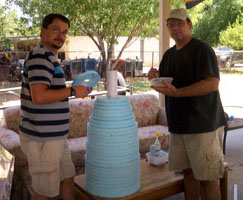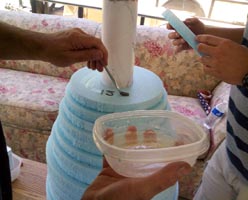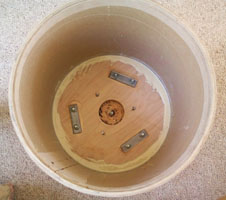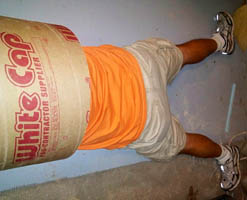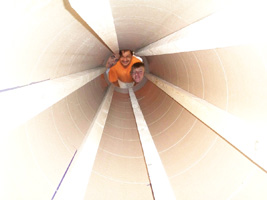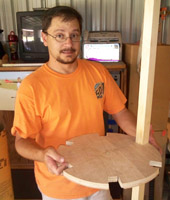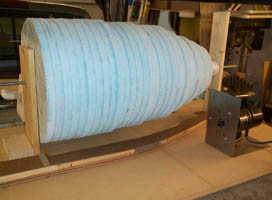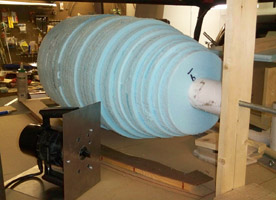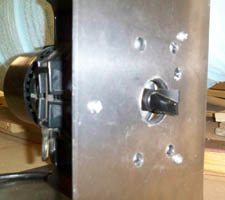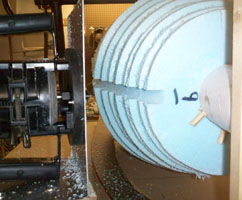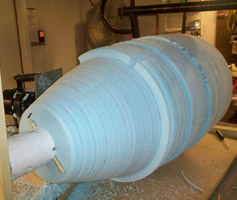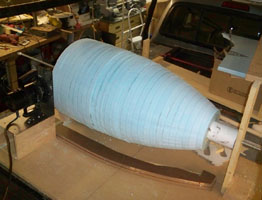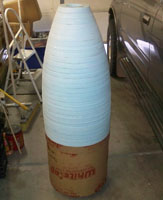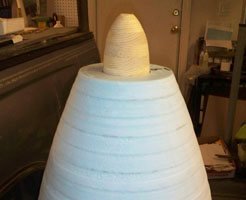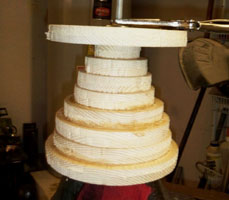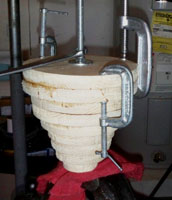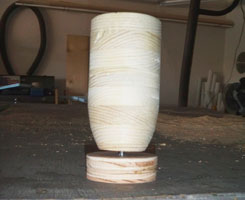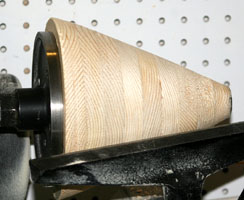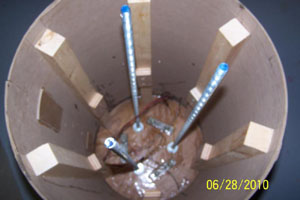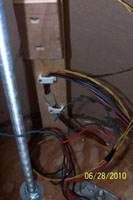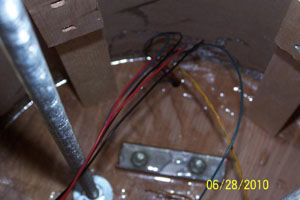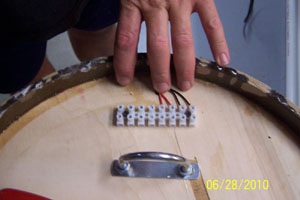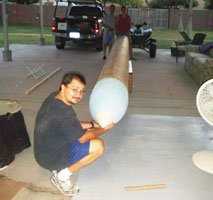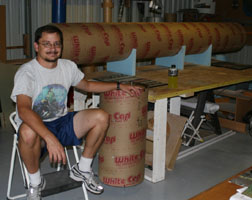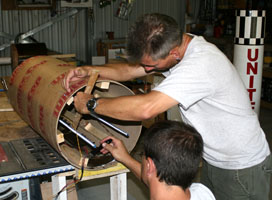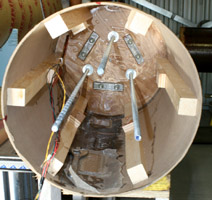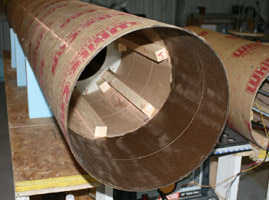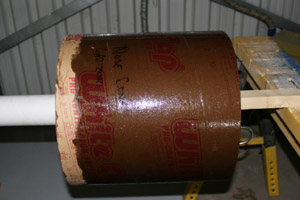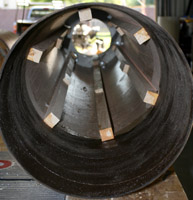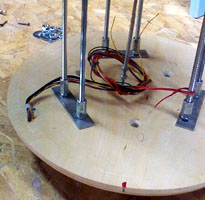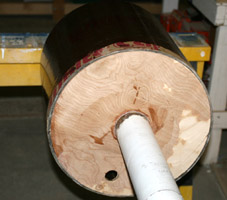A project of this size requires much planning if it's going to be successful...Dwain is pretty much taking care of the design features. Between 2008 and 2010 I gained some large-scale rocket experience working on my own Level 3 Mighty Moe project and on the upscale Cherokee-N project with the Rocket Doc. Besides helping with general construction, I offered to make the nose cone in a similar fashion as I did for the Cherokee-N. Since the initial discussions, Dwain has changed the fin design to what you see in the RockSim screenshot below. And now they are made out of wood and not fiberglass as originally envisioned.
Some of the design features for the Big O include:
- Modular design for ease of transport and assembly, as well as multiple launch configuration possibilities.
- Long carbon-fibre 150mm (six inch) motor tube so the rocket can fly on the most powerful "O" motor in the current Cesaroni catalog: the O8000.
- Internal load-bearing structure throughout.
- Onboard video.
- Quadruple reduntant electronics and ejection charges.
- Custom WWII bomber-style "Nose Art".
- Custom nose cone. Click Here for my tutorial page on making large nose cones.
Click here to download a PDF file of the Pro 150 motor dimensions.
Below is a screen shot of the Rock Sim file of the Big O.

